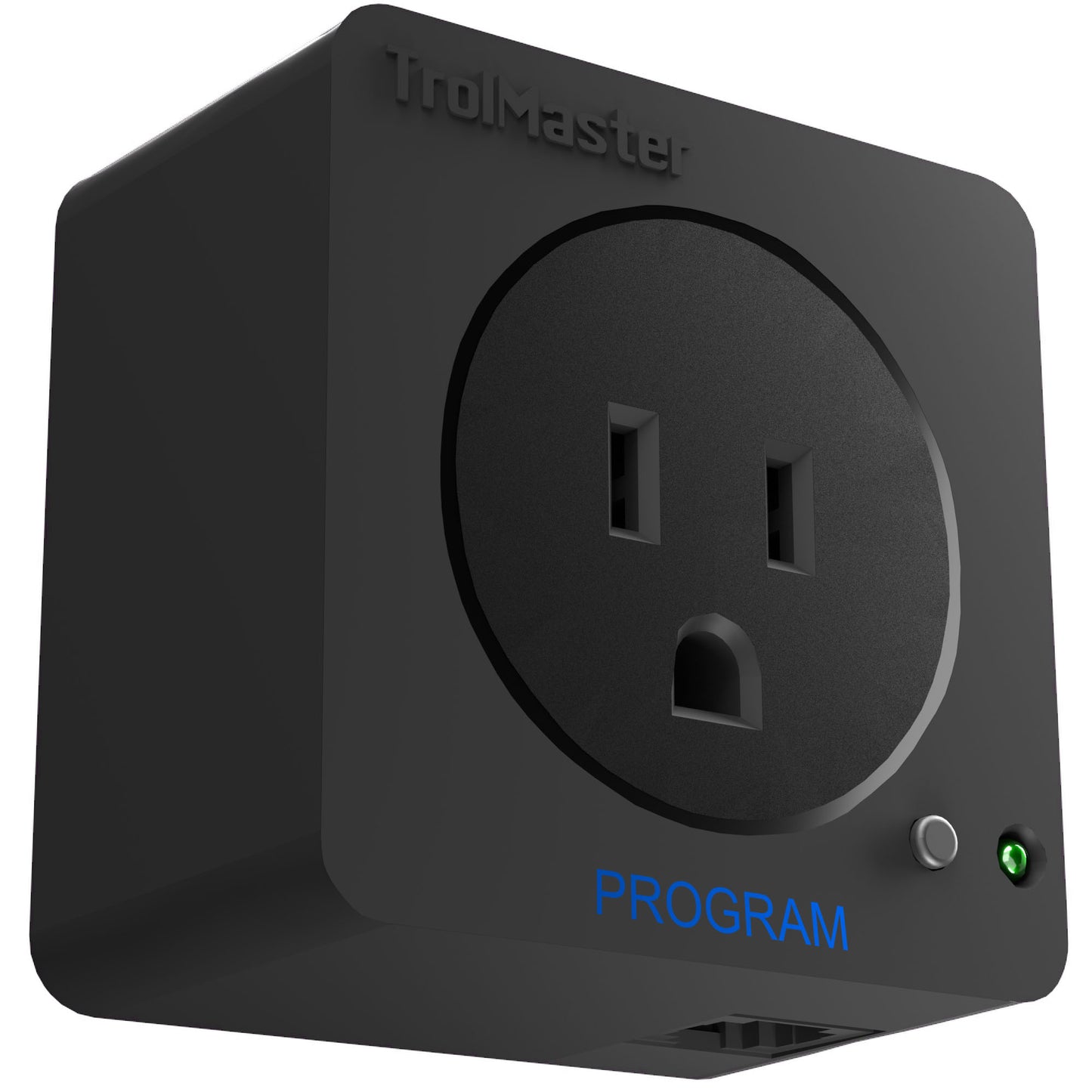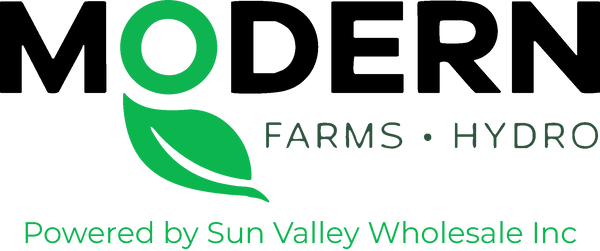TrolMaster
TrolMaster Program Device Station
TrolMaster Program Device Station
64 in stock
Couldn't load pickup availability
Payment options
- Fast Delivery
- Easy Returns
- Secure Checkout
Description
Description
The TrolMaster Program Device Station is an advanced and programmable component designed for precise environmental control in indoor grow environments. As part of the TrolMaster Hydro-X system, this device seamlessly integrates with other sensors and controllers, allowing growers to program and automate various aspects of their grow space.
Key Features:
Programmable Control: The primary function of the Program Device Station is to provide programmable control over various environmental parameters. This includes controlling lighting schedules, irrigation cycles, temperature settings, and other critical factors.
Compatibility: Specifically designed to work with the TrolMaster Hydro-X system, the Program Device Station becomes a central hub for managing and automating different aspects of the grow environment. This integration allows for comprehensive control through a unified system.
User-Friendly Interface: Equipped with a user-friendly interface, the device allows growers to easily program and customize their desired settings. This is essential for tailoring the grow environment to the specific needs of different plants and growth stages.
Multi-Channel Control: The Program Device Station typically supports multi-channel control, enabling growers to manage and program various devices simultaneously. This could include controlling multiple lights, pumps, fans, and other equipment from a single station.
Customizable Programs: Growers can create and customize programs based on their unique requirements. This flexibility is crucial for adapting to different stages of plant growth, from seedling to vegetative to flowering stages.
Integrated Sensor Inputs: The station often comes with integrated sensor inputs, allowing it to receive real-time data from various environmental sensors. This data can be used to make dynamic adjustments to the programmed settings.
Remote Monitoring and Control: Depending on the broader control system, the Program Device Station may support remote monitoring and control. This is particularly advantageous for growers who need to manage and monitor their grow environment from a distance.
Scheduled Events: Users can schedule events such as light cycles, irrigation intervals, and temperature adjustments. The station executes these events based on the programmed schedule, providing consistent and automated control.
Data Logging (if applicable): Some models of the Program Device Station may offer data logging capabilities, allowing users to track and analyze environmental trends over time. This historical data can inform future programming decisions.
Alarm and Alert Features: To enhance user awareness, the station may include alarm features. If any parameter deviates from the programmed settings, the system can trigger alerts, notifying users of the need for attention.
Expandability: The Hydro-X system, including the Program Device Station, is often designed with expandability in mind. Additional sensors or controllers can be added to the system as growers expand their operations or as new equipment is introduced.
Durable Construction: Built to withstand the conditions of grow rooms and similar environments, the Program Device Station is constructed with durability in mind. This ensures reliable performance even in environments with varying conditions.
Usage Instructions:
System Integration: Begin by integrating the Program Device Station into your existing Hydro-X control system. Follow the manufacturer's instructions for proper wiring and connectivity.
Connect Devices: Connect various devices such as lights, pumps, fans, and other equipment to the Program Device Station. Ensure that these devices are compatible with the station and follow the guidelines for proper connections.
Programming: Utilize the user-friendly interface to program your desired settings. This may include setting light schedules, irrigation cycles, temperature thresholds, and other parameters. Customize programs based on the specific needs of your plants.
Sensor Integration: If not pre-installed, connect environmental sensors to the station. These sensors provide real-time data on temperature, humidity, CO2 levels, and other factors, allowing the station to make dynamic adjustments.
Multi-Channel Control: If your setup involves multiple devices, take advantage of the multi-channel control capabilities. Program different channels to operate independently or in coordination with each other.
Scheduled Events: Set up scheduled events for different aspects of your grow environment. This could include adjusting lighting cycles, initiating irrigation, or changing temperature settings at specific times.
Remote Integration (if applicable): If remote monitoring and control are desired, integrate the Hydro-X system with the broader control network. This may involve connecting to a central controller or using a dedicated app for remote access.
Data Logging (if applicable): If the Program Device Station supports data logging, configure the system to log relevant environmental data over time. Analyzing this data can provide insights into trends and help optimize programming.
Alarm Configuration: If the station features alarm capabilities, configure the alarm settings. This may include setting thresholds for different parameters that, if exceeded, trigger alerts. Alarms enhance awareness and prompt timely intervention.
Testing and Calibration: Test the programmed events to ensure that the Program Device Station is accurately controlling the connected devices. If needed, calibrate the system based on observed performance.
Regular Maintenance: Periodically check the system for proper functioning and perform any recommended maintenance tasks. This ensures consistent and reliable performance over the long term.
Expansion (if needed): As your grow operation expands or if you introduce new equipment, consider expanding the Program Device Station. Follow the manufacturer's guidelines for expanding and configuring the system.
In conclusion, the TrolMaster Program Device Station is a powerful tool for growers who seek advanced and programmable control over their indoor grow environments. Its seamless integration with the Hydro-X system, coupled with its user-friendly interface and customizable programming, makes it an indispensable component for achieving optimal conditions for plant growth.
The TrolMaster DSP-1 program device module (timer module) works like a multi-function timer. The DSP-1 allows the user to easily connect any device that needs to be controlled by TIME to the Hydro-x. Any device that is 10-amps at 120 volts or less can be controlled by the DSP-1.
Share

INFORMATION QUESTIONS
FREQUENTLY ASKED QUESTIONS
What is Hydroponics?
Hydroponics is the science of growing plants without soil. The plants thrive on the nutrient-water solution alone. The growing medium merely acts as a support for the plants and their root systems while the solution passes freely. The growing medium, if any, is totally inert.
What types of plants grow best hydroponically?
Anything can be grown hydroponically, but some plants prove to be more space efficient. Some plants we suggest are tomatoes, sweet peppers, hot chilies, lettuce, spinach, squash, cucumbers, broccoli, beans, snow peas, herbs and flowers of all types.
Can you REALLY get better yields/quicker growth?
Absolutely. The plants, when receiving everything they need, tend to be healthier, faster growing and generally more productive. You can expect 30% faster growth with many crops.
What are the watering cycle timelines hydroponic systems?
Once the reservoir is filled with nutrients, it is time to put your hydro system to work! The ease of hydroponics is automation – automation is achieved by putting the pump on a timer according to your watering needs. The watering cycle depends on growth stage, growing medium and hydroponic system. In an ebb and flow or drip system with rockwool as the medium, seedlings, clones and plants in the early vegetative stage require watering only once a day for 15-30 minutes (twice a day for higher temps). Mature, flowering and fruiting plants require a heavier feed and can be fed once a day for 30 minutes (twice a day for higher temps). Typically soiless mixes and coco fiber can be watered for about 15 minutes twice a day, and can be adjusted for heavier feeding during the flowering and fruiting stage or higher temps. ViaStone, Hydroton, Grow Rocks, and Silicate mediums need to be watered more frequently – a constant drip for drip systems, and about 15-30 minutes every 3 hours for ebb and flow systems and can be adjusted for heavier feeding during the flowering and fruiting stage or higher temps. Aeroponic systems require frequent watering cycles; 30-60 seconds every few minutes or a constant spray.
What do I need to test pH? How do I test pH?
pH has a range from 0 (acidic) – 14 (alkaline), with 7 being neutral. A proper hydroponic pH range is between 5.5 to 6.2 for most hydroponic crops. For specific crop pH, check out our Plant Guide. pH must remain within the proper range for good plant health, disease resistance, and proper nutrient uptake. pH is maintained by adding pH Up and pH Down to the nutrient solution. For more information, see the Testssection of our site.
How will the flavor compare to my outdoor grown, organic produce?
The taste may be even better! This is simply due to the fact that the hydroponically grown plants are getting everything they need, when they need it. Don’t be fooled by “hot house” produce grown commercially. The grower’s primary concern is shipability and storage, not flavor. When you grow your own vegetables at home, you can expect nothing less than excellent results. Plus, hydroponically grown produce has the added benefit of a longer shelf life.

